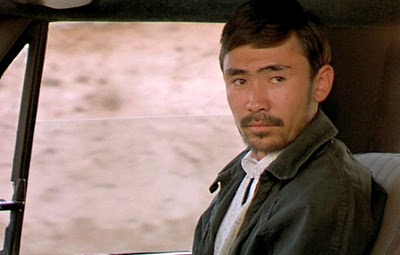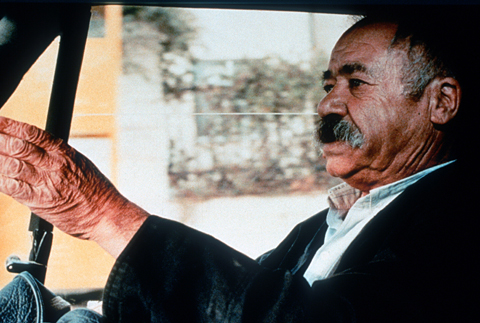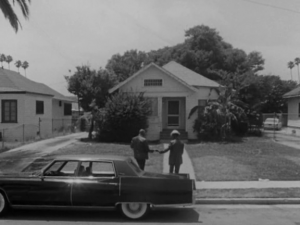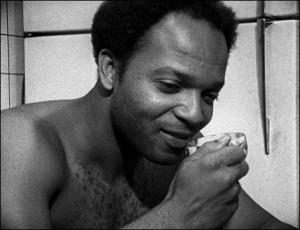This is my fifth column for Cahiers du Cinéma España, which ran in their February 2008 issue. Incidentally, any Americans who might still be skeptical about the multiracial and multicultural composition of the Iranian population are urged to check out the CIA’s web site on this matter: page down to Iran’s ethnic groups, where you’ll find “Persian 51%, Azeri 24%, Gilaki and Mazandarani 8%, Kurd 7%, Arab 3%, Lur 2%, Baloch 2%, Turkmen 2%, other 1%,” and compare this to their 2007 estimates for the U.S. (“white 79.96%, black 12.85%, Asian 4.43%, Amerindian and Alaska native 0.97%, native Hawaiian and other Pacific islander 0.8%, two or more races 1.61%” — something I wish I’d known about when I was having my editorial dispute at the Reader. — J.R.


After reflecting in my last column about the “attractions and perils of internationalism,” I’ve been pondering how to distinguish these concerns from those of language, race, and ethnicity. The lack of a common ground in discussing some issues only adds to the confusion. Some months ago, I was shocked when my editor at the Chicago Reader, a weekly “alternative” newspaper where I’ve worked since 1987 (and from which I’m preparing to retire as a staff member in early 2008), eliminated a phrase from an article in which I asserted that Iran was just as multicultural and as multiracial as the U.S., Read more
From the Chicago Reader (October 21, 2007). — J.R.

I haven’t seen David Mamet’s controversial two-character play on the stage, but his own film adaptation (2007) is easily his best movie since House of Games. The two characters are a pontificating, bullying male college professor (William H. Macy) up for tenure and his initially cowed, eventually empowered female student (Debra Eisenstadt), who winds up charging him with sexual harassment. The stage versions have often been attacked for siding with the professor, but what seems most impressive about the movie, which may have benefited from certain refinements in the material, is that the two characters are so evenly matched by the dramaturgy that they become Strindbergian antagonists in a life-and-death struggle — equally odious in their authoritarian reliance on institutions to define their own identities and equally crippled by what might be described as their political impotence, which drives them to reach desperately for whatever institutional weapons are available to them. Within this context, education becomes as much an alibi as political correctness, and the most telling aspect of the struggle is that the two characters, even in their carefully coded sexual roles, become two different versions of the same blocked individual. Read more
Jonathan Rosenbaum was film critic for the Chicago Reader from 1987 to 2008. Born in Alabama in 1943, the son and grandson of movie exhibitors, he grew up in a house designed by Frank Lloyd Wright. While living in Paris (1969-1974), he worked as an extra for Robert Bresson and as a script consultant for Jacques Tati, before working as assistant editor for Monthly Film Bulletin and staff writer for Sight and Sound in London (1974-1977).
His books include IN DREAMS BEGIN RESPONSIBILITIES: A JONATHAN ROSENBAUM READER (forthcoming in early 2024), CINEMATIC ENCOUNTERS 2:PORTRAITS AND POLEMICS (2019), CINEMATIC ENCOUNTERS: INTERVIEWS AND DIALOGUES (2018), GOODBYE CINEMA, HELLO CINEPHILIA: FILM CULTURE IN TRANSITION (2010), THE UNQUIET AMERICAN: TRANSGRESSIVE COMEDIES FROM THE U.S. (2009), DISCOVERING ORSON WELLES (2007), ESSENTIAL CINEMA: ON THE NECESSITY OF FILM CANONS (2004), MOVIE MUTATIONS: THE CHANGING FACE OF WORLD CINEPHILIA (coedited with Adrian Martin, 2003), ABBAS KIAROSTAMI (with Mehrnaz Saeed-Vafa, 2003, expanded second edition 2018), MOVIE WARS: HOW HOLLYWOOD AND THE MEDIA LIMIT WHAT FILMS WE CAN SEE (2000), DEAD MAN (2000), MOVIES AS POLITICS (1997), PLACING MOVIES: THE PRACTICE OF FILM CRITICISM (1995), THIS IS ORSON WELLES by Orson Welles and Peter Bogdanovich (edited, 1992), GREED (1991), MIDNIGHT MOVIES (with J. Read more
From the August 3, 2007 Chicago Reader. — J.R.

The first feature (1977) of the highly talented black filmmaker Charles Burnett, who set most of his early films in Watts (including My Brother’s Wedding and To Sleep With Anger); this one deals episodically with the life of a slaughterhouse worker. Shot on a year’s worth of weekends for under $10,000, this remarkable work is conceivably the single best feature about ghetto life. It was selected for preservation by the National Film Registry as one of the key works in American cinema — ironic and belated recognition of a film that, until this recent restoration, had virtually no distribution. It shouldn’t be missed. With Henry Gayle Sanders. 87 min. (JR)
 Read more
Read more





